 Nelsons Foundational Bible Concordance King James Version
Nelsons Foundational Bible Concordance King James Version 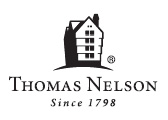 2004 by World Publishing All rights reserved. No portion of this book may be reproduced, stored in a retrieval system, or transmitted in any form or by any meanselectronic, mechanical, photocopy, recording, scanning, or otherexcept for brief quotations in critical reviews or articles, without the prior written permission of the publisher. Published in Nashville, Tennessee, by Thomas Nelson. Thomas Nelson is a registered trademark of HarperCollins Christian Publishing, Inc. Thomas Nelson titles may be purchased in bulk for educational, business, fund-raising, or sales promotional use. For information, please e-mail SpecialMarkets@ThomasNelson.com.
2004 by World Publishing All rights reserved. No portion of this book may be reproduced, stored in a retrieval system, or transmitted in any form or by any meanselectronic, mechanical, photocopy, recording, scanning, or otherexcept for brief quotations in critical reviews or articles, without the prior written permission of the publisher. Published in Nashville, Tennessee, by Thomas Nelson. Thomas Nelson is a registered trademark of HarperCollins Christian Publishing, Inc. Thomas Nelson titles may be purchased in bulk for educational, business, fund-raising, or sales promotional use. For information, please e-mail SpecialMarkets@ThomasNelson.com.
All Scripture quotations are taken from the Holy Bible, King James Version. eISBN: 9780529106384 Previously published as Worlds Concise Bible Concordance, ISBN 0-5291-1903-X Contents Thank you for purchasing the HarperCollins Christian Publishing eBook version of Nelsons Foundational Bible Concordance. What is the difference between an eBook and a print book? eBook versions contain all of the content and supplementary materials found in the original print versions and are optimized for navigation in the various apps and devices used for display. eReaders recognize text as one fluid string and are formatted in a single column. eReaders currently do not support the more complex layout seen in print version books. Therefore, some content may not appear in the same place as in the original print version, but it is structured consistently and uses hyperlinks to navigate between related content.
In addition to the full Concordance materials, the eBook version of Nelsons Foundational Bible Concordance also contains an of the full text of the King James Version Bible. All verse references in the Concordance are linked to that verse in the Bible so that you can easily navigate between the Concordance and Bible text. How do I use the eBook Table of Contents? *Important Note: Be sure to consult your device manufacturers Users Guide for device-specific navigation instructions.* The is the primary navigation anchor to quickly access various parts of the eBook. It is generally formatted in the same order as the original print version and is hyperlinked as follows: , with alphabetical quick links (full text Bible) Selecting a main . Using the Concordance Select the hyperlinked letter of the alphabet in the to go to the corresponding word list. Use the devices Next Page/Previous Page buttons or functions to scroll through the entries.
Select a word to go to that specific entry and see all the hyperlinked Scripture entries that contain that word. Select the Bible reference hyperlink to go to the corresponding Bible verse. To return to the from the Bible text, use your devices back button or function. To return to the alphabetical word list, select the specific word entry. To return to the main from the alphabetical word list, select the letter heading (A). Using the Bible Appendix hyperlinks quickly access individual Bible books and chapters in each testament.
Book links go directly to the beginning of the book. Chapter links go directly to the beginning of the chapter associated with a book. Every Bible book and chapter hyperlink in the main text returns or goes back to the chapter listing. Use the devices back button or function to go back to the last selection. Using the chapter listing to navigate to specific Bible verses: Navigate to and select a specific book of the Bible from the chapter listing. Select a chapter number hyperlink.
Use the devices Next Page/Previous Page buttons or functions to scroll through the verses. Use the devices back button or function to go back to the last selection. While no concordance to the Bible lists a Scripture quotation for every use of every word in the Bible, all concordances use various methods to balance the need for both portability and completeness. In creating Nelsons Foundational Bible Concordance a method was developed to include the most likely places for the user to find every verse in Scripture. Like all other concordances, the most common of words are not indexed in the body of the concordance. Words that are not distinctive or have such a vast number of occurrences as to not be useful have not been listed.
Examples of such words are prepositions and extremely common modifiers. The second occurrence within a verse may be omitted in certain words that have vast numbers of entries. The principle is to retain references to the more distinctive words within a given verse and to omit those that are obviously so common as to not be an aid in finding the passage. By removing the clutter of those entries that do not readily point to a particular reference or repeated references within a verse, we have made it quicker to find Scripture passages. In most cases proper nouns have a suggested pronunciation shown along with a definition. HARARITE (har-a-rite) Native of the hill country of Judah. At times there are a variety of pronunciations for a given word or there is some debate over its exact meaning.
The most common has been selected. Where there are multiple people or places indicated, the references are divided to indicate which occurrence references a particular individual or place. HARAN (ha-ran) See . 1. A son of Terah and begat Abram, Nahor, and H 2. A Levite Shelomith, and Haziel, and H 3.
A son of Caleb Ephah, Calebs concubine, bare H 4. A city in northern Mesopotamia and they came unto H, and dwelt Several guiding principles have been kept in mind in preparing Nelsons Foundational Bible Concordance: immediacy, simplicity, thoroughness, and accuracy. The user will be able to find every passage of Scripture quickly and with ease. The most helpful tools have been included to help in pronunciation, distinguishing multiple persons or places, and to understand actual meaning. Old Testament New Testament
. A mountain range in Moab. Get thee up into this mount A and pitched in the mountains of A departed from the mountains of A Get thee up into this mountain A every one that is proud, and a him nor a himself for the noise of is low, and a him that is high walk in pride he is able to a shall exalt himself shall be a exalteth himself shall be a that exalteth himself shall be a I know both how to be a, and I Have I committed an offence in a and fifty days the waters were a to see if the waters were a from waters were a from off the earth it shall be a from thy estimation not dim, nor his natural force a Then their anger was a toward him (ab-bah) Aramaic for Father. And he said, A, Father, all things of adoption, whereby we cry, A Son into your hearts, crying, A (ab-dah) 1. A mountain range in Moab. Get thee up into this mount A and pitched in the mountains of A departed from the mountains of A Get thee up into this mountain A every one that is proud, and a him nor a himself for the noise of is low, and a him that is high walk in pride he is able to a shall exalt himself shall be a exalteth himself shall be a that exalteth himself shall be a
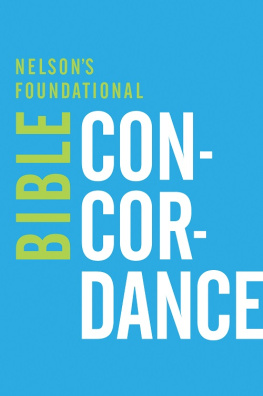
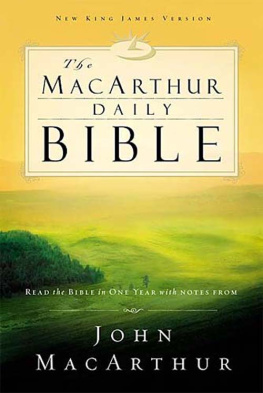

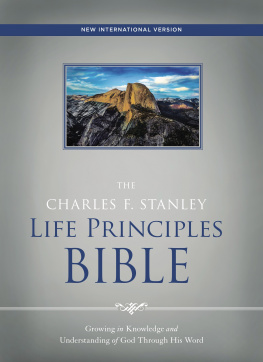
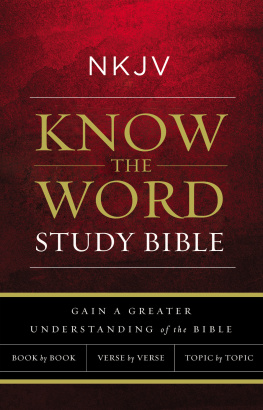
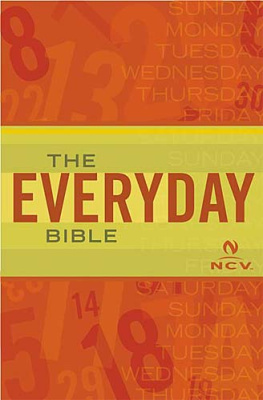
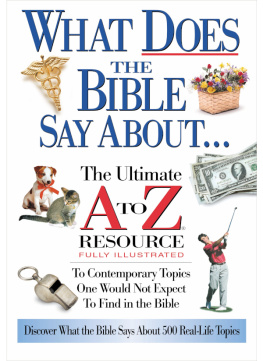

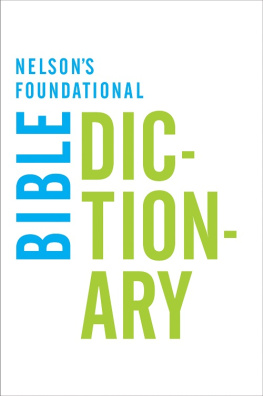

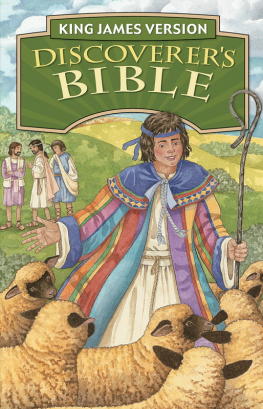

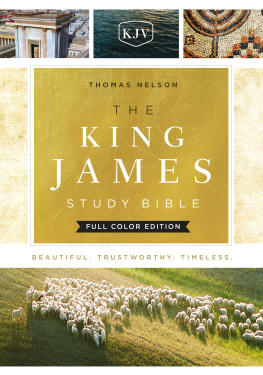
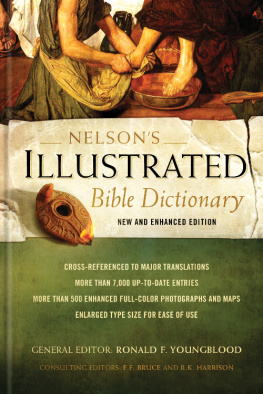
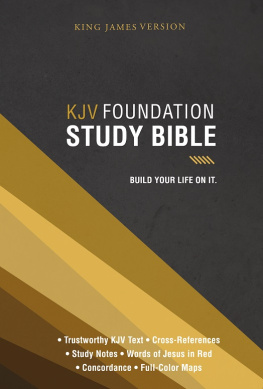
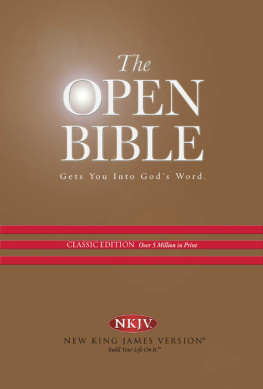

 Nelsons Foundational Bible Concordance King James Version
Nelsons Foundational Bible Concordance King James Version  2004 by World Publishing All rights reserved. No portion of this book may be reproduced, stored in a retrieval system, or transmitted in any form or by any meanselectronic, mechanical, photocopy, recording, scanning, or otherexcept for brief quotations in critical reviews or articles, without the prior written permission of the publisher. Published in Nashville, Tennessee, by Thomas Nelson. Thomas Nelson is a registered trademark of HarperCollins Christian Publishing, Inc. Thomas Nelson titles may be purchased in bulk for educational, business, fund-raising, or sales promotional use. For information, please e-mail SpecialMarkets@ThomasNelson.com.
2004 by World Publishing All rights reserved. No portion of this book may be reproduced, stored in a retrieval system, or transmitted in any form or by any meanselectronic, mechanical, photocopy, recording, scanning, or otherexcept for brief quotations in critical reviews or articles, without the prior written permission of the publisher. Published in Nashville, Tennessee, by Thomas Nelson. Thomas Nelson is a registered trademark of HarperCollins Christian Publishing, Inc. Thomas Nelson titles may be purchased in bulk for educational, business, fund-raising, or sales promotional use. For information, please e-mail SpecialMarkets@ThomasNelson.com.